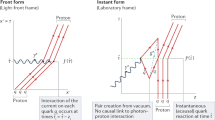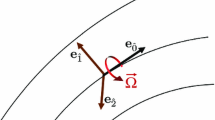Abstract
Over the past several years Haisch, Rueda, and others have made the claim that the origin of inertial reaction forces can be explained as the interaction of electrically charged elementary particles with the vacuum electromagnetic zero-point field expected on the basis of quantum field theory. After pointing out that this claim, in light of the fact that the inertial masses of the hadrons reside in the electrically chargeless, photon-like gluons that bind their constituent quarks, is untenable, the question of the role of quantum zero-point fields generally in the origin of inertia is explored. It is shown that, although non-gravitational zero-point fields might be the cause of the gravitational properties of normal matter, the action of non-gravitational zero-point fields cannot be the cause of inertial reaction forces. The gravitational origin of inertial reaction forces is then briefly revisited. Recent claims critical of the gravitational origin of inertial reaction forces by Haisch and his collaborators are then shown to be without merit.
Similar content being viewed by others
REFERENCES
B. Haisch, A. Rueda, and H. Puthoff, Phys. Rev. A 49, 678–694 (1994).
J. F. Woodward and T. Mahood, Found Phys. 29, 899–930 (1999).
F. Wilczek, Physics Today, Nov. 1999, p. 11.
Y. Dobyns, A. Rueda, and B. Haisch, Found. Phys. 30, 59–80 (2000).
P. Milonni, The Quantum Vacuum (Academic, New York, 1993).
J. A. Wheeler and R. P. Feynman, Rev. Mod. Phys. 17, 157–181 (1945).
J. A. Wheeler and R. P. Feynman, Rev. Mod. Phys. 21, 425–433 (1949).
J. Cramer, Rev. Mod. Phys. 58, 647–687 (1986).
R. J. Cook, Nuovo Cimento B 35, 25–33 (1976).
K. Nordtvedt, Int. J. Theor. Phys. 27, 1395–1404 (1988).
M. Ibison, H. E. Puthoff, and S. R. Little, “The speed of gravity revisited,” http://xxx.lanl. gov/abs/physics/9910050.
D. W. Sciama, Mon. Not. Roy. Astron. Soc. 113, 34–42 (1953).
C. H. Brans, Phys. Rev. 125, 388–396 (1962).
A. Einstein, The Meaning of Relativity, 5th edn. (Princeton University Press, Princeton, New Jersey, 1955), esp. pp. 99–102.
Author information
Authors and Affiliations
Rights and permissions
About this article
Cite this article
Woodward, J.F. Gravity, Inertia, and Quantum Vacuum Zero Point Fields. Foundations of Physics 31, 819–835 (2001). https://doi.org/10.1023/A:1017500513005
Issue Date:
DOI: https://doi.org/10.1023/A:1017500513005




